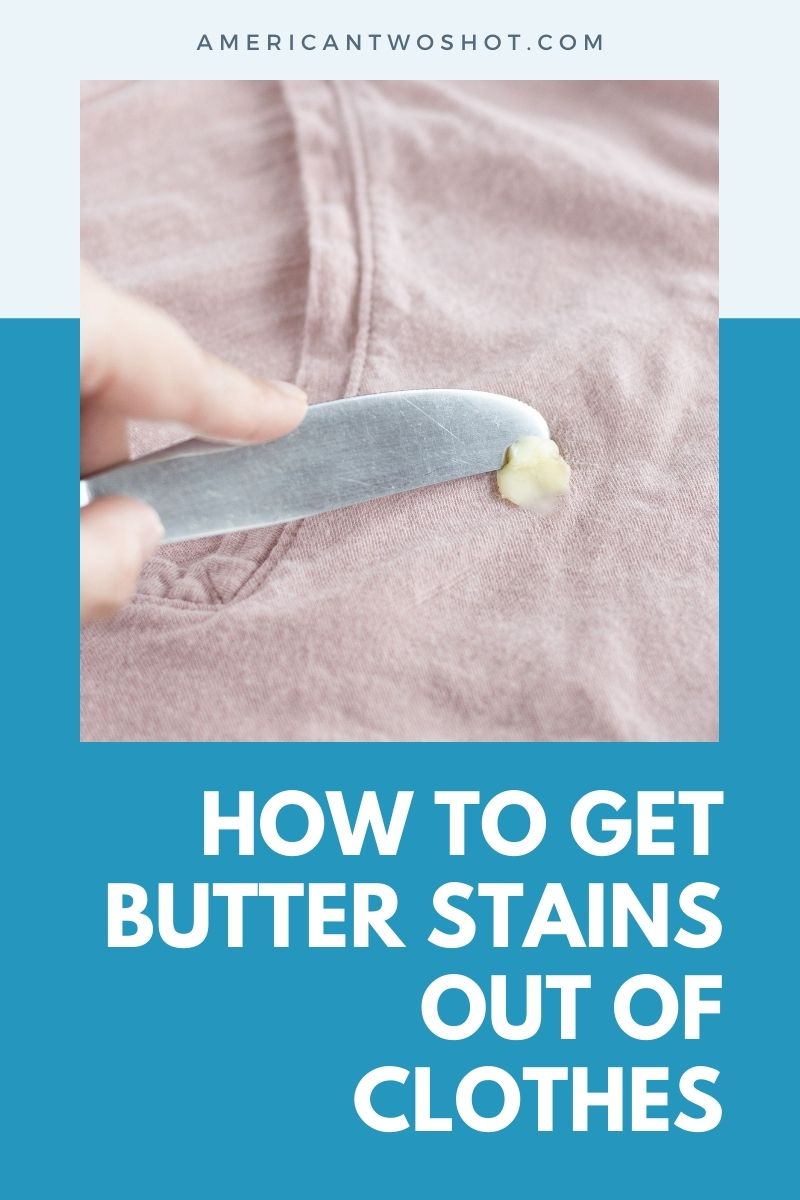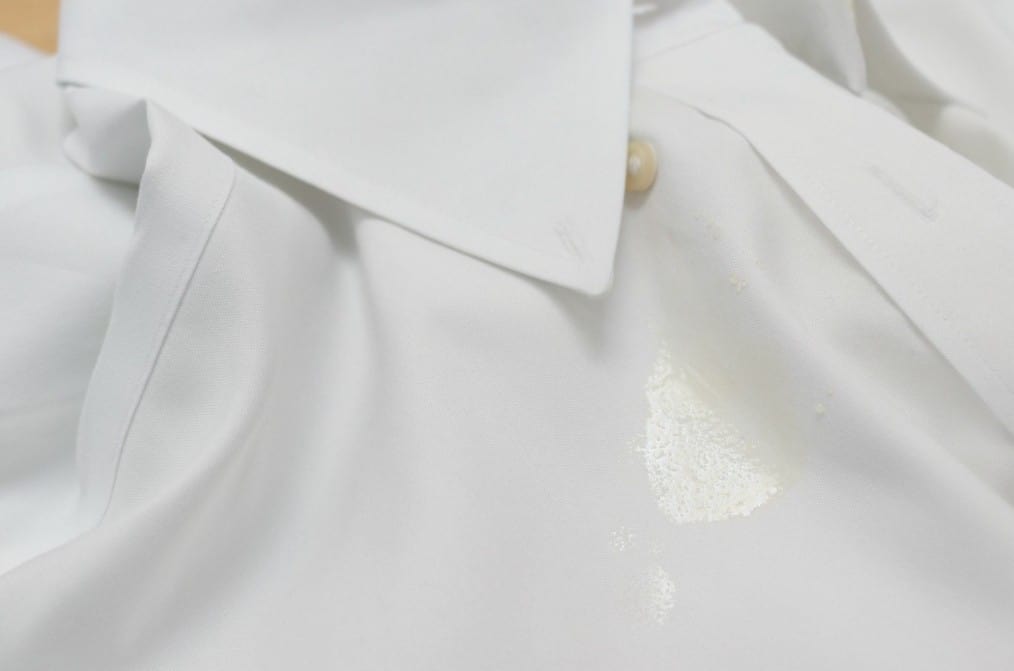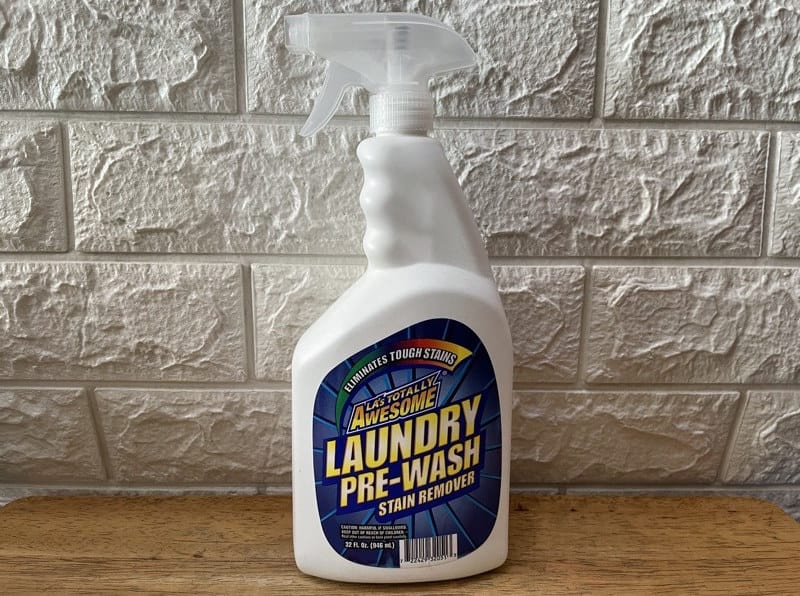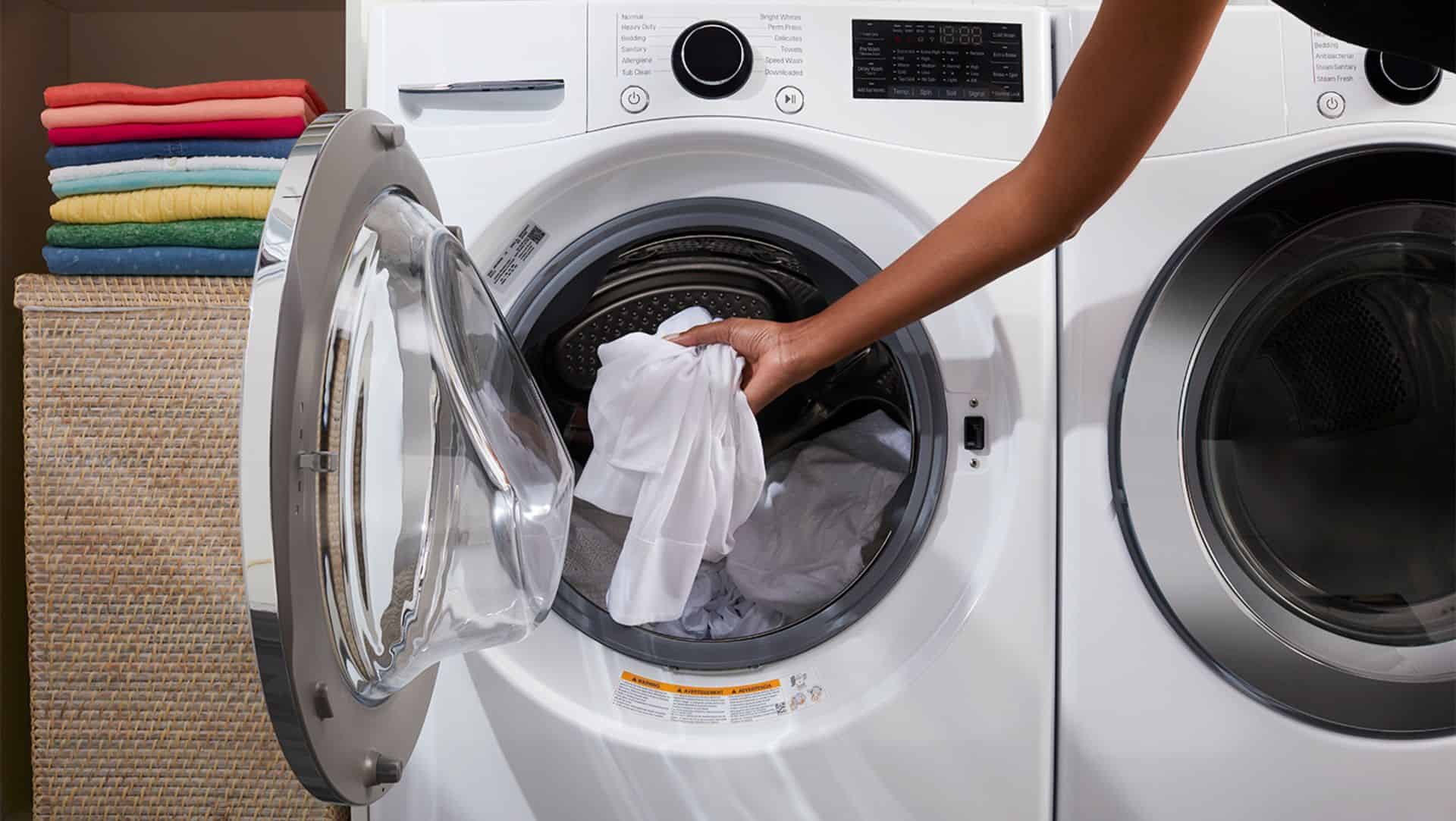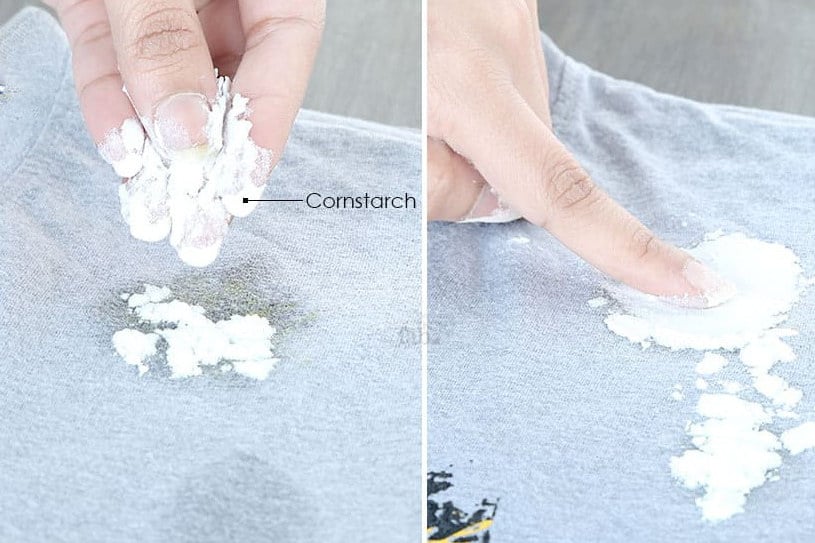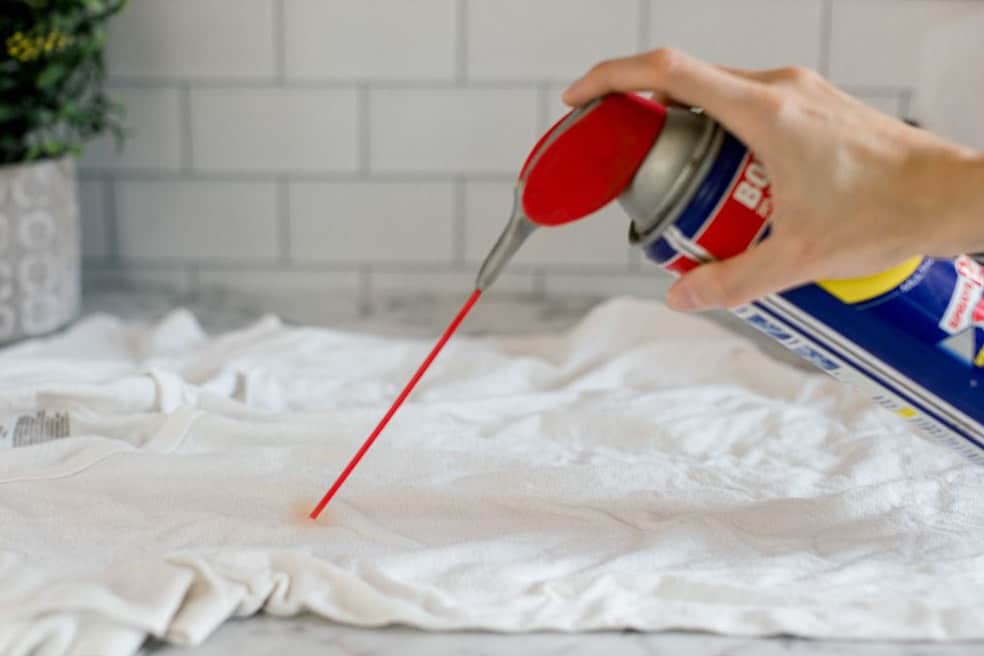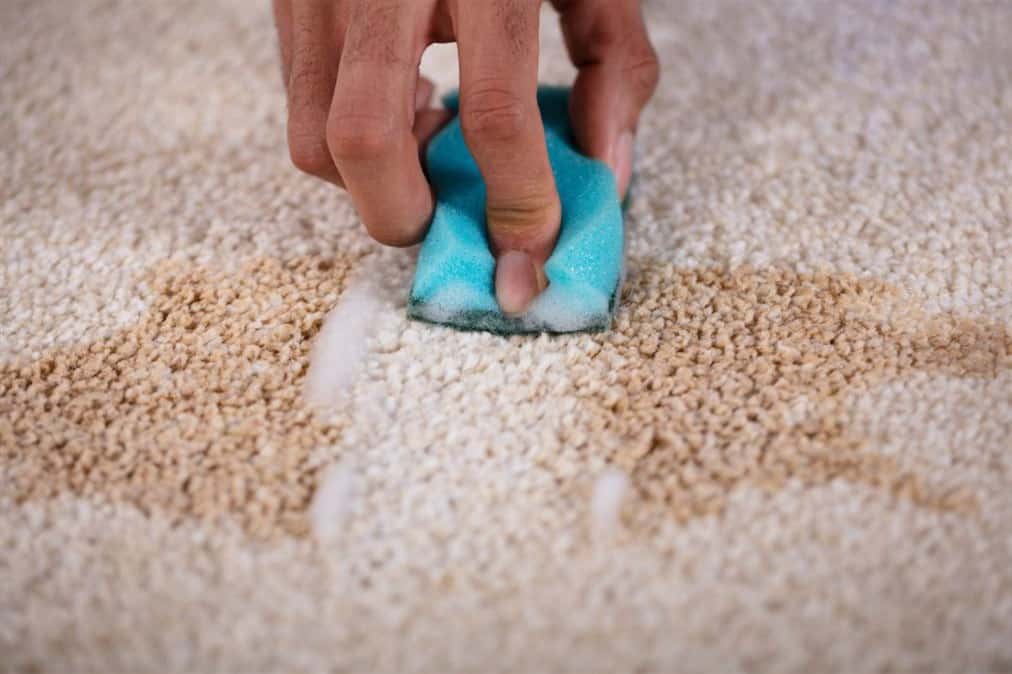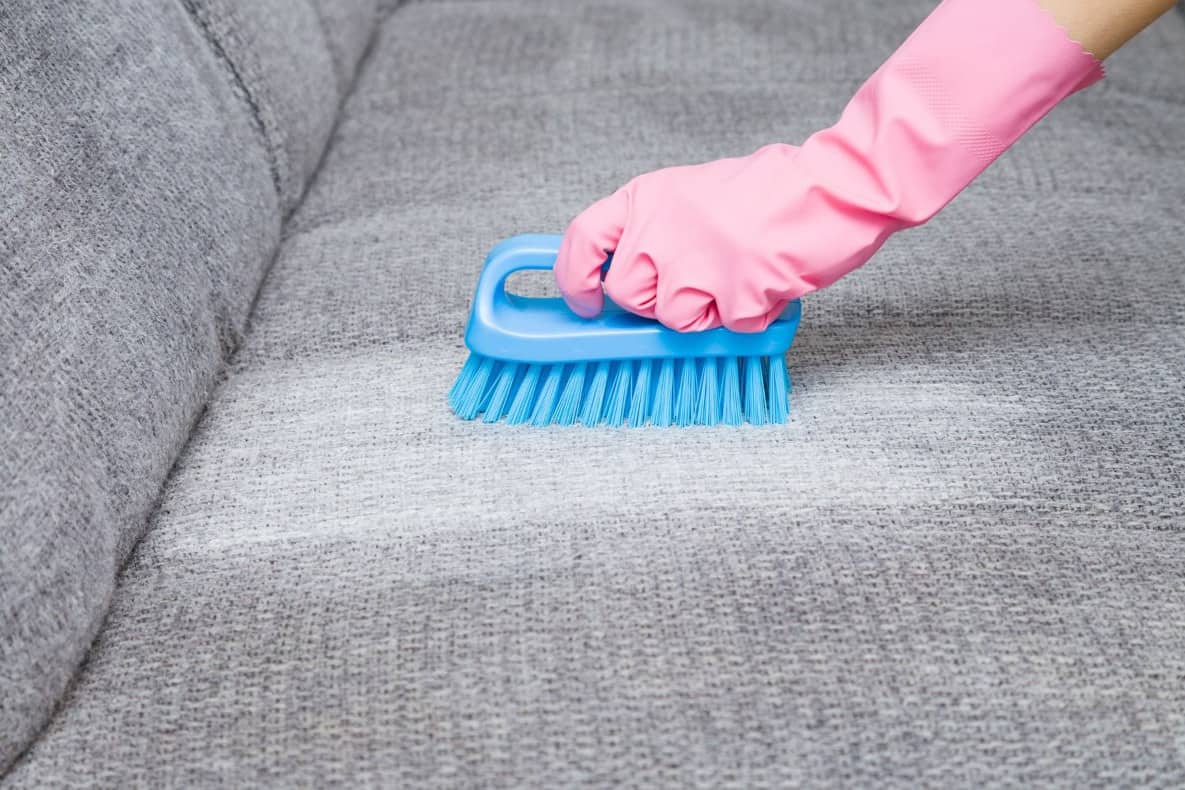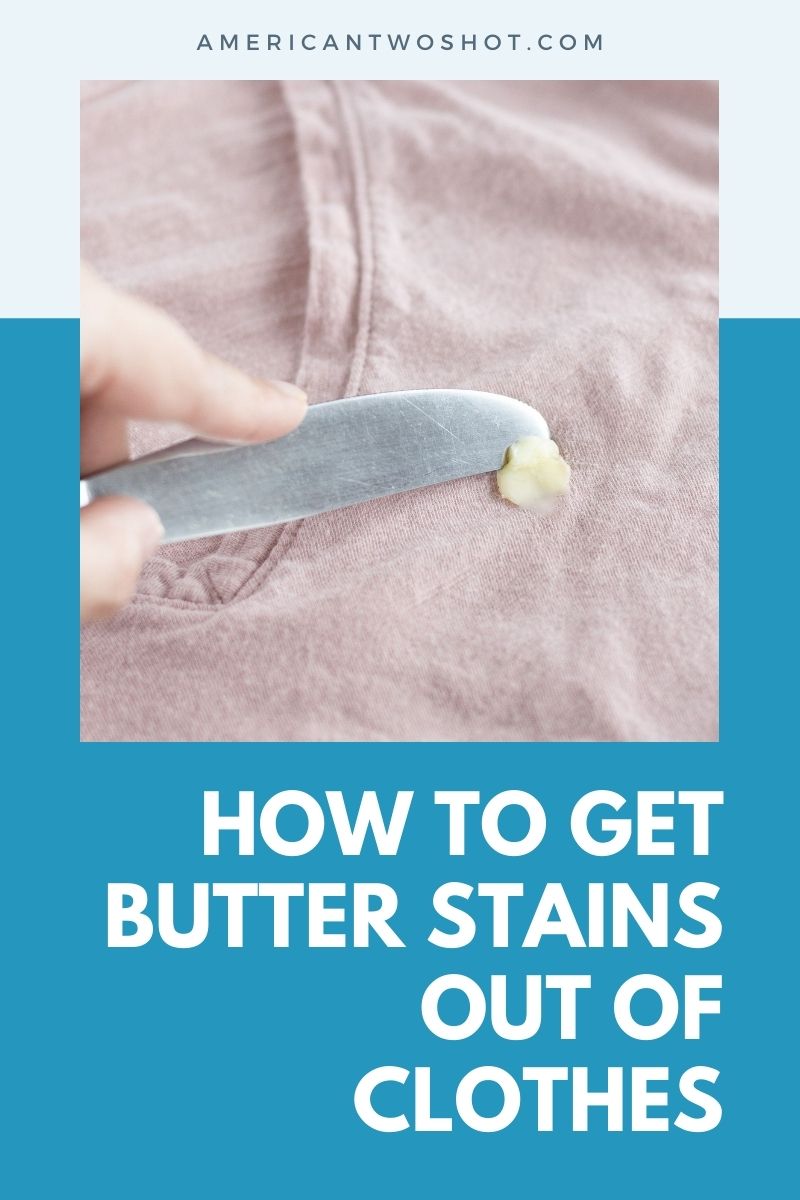Even if you don’t often cook, knowing how to remove butter stains from clothing can still be helpful. It’s frequent for butter stains to leave a slightly shadowed area that isn’t immediately noticeable.
As time passes, the stain becomes darker and more challenging to remove, and if the piece of clothing and oil stain dry, the stain can be set permanently. You can remove butter stains from your clothes by following these laundry instructions.
Characteristics of Butter Stains
Because of their greasy, oily nature, butter stains on clothing are notoriously tricky to remove. Butter stains can be difficult to remove from cotton, denim, linen, and polyester because most standard detergents are not designed to tackle greasy food stains.
Butter stains, on the other hand, aren’t always consistent. Stains can sometimes be removed with one or two attempts, depending on how quickly you catch them. Having butter stains isn’t helping matters either. A slathering of melted butter on a corn cob can lead to a soiled shirt in a matter of seconds.
If you are distracted by good conversation and even better food, you may not notice a few drops of butter on your shirt or pants for hours. You may not even notice a butter stain on your pants until you look down and see dried grease marks.
Different Ways to Remove Butter Stains
Oil and milk proteins in butter create a stain that can be difficult to remove. Stain removal is the most important thing you can do for your garment, so treat the stain as soon as possible. Here are three ways to keep your butter-stained clothes out of the trash. Methods one and two can be used in conjunction or separately, while the third method, when all else fails, should be the last resort.
Removing butter stains using dishwashing liquid
Rinse the stain with soap and water. It’s a good idea to use dishwashing soap to remove butter from clothing because it’s designed to remove fatty and greasy food products from pots, pans, and plates.
- Apply lukewarm water to the stained area.
- Squirt a little dishwashing detergent on the stain.
- Gently massage the stain with your fingers, making sure to distribute the soap evenly across the cloth.
- Rinse thoroughly to eliminate any remaining residue of dirt and stains. Using a sink or bathtub faucet, rinse the stained area until the detergent is eliminated from the fabrics. Hold the material taut while letting go of it to check if the soap has been washed away.
Use a prewash stain remover to pretreat the stain
A stain as stubborn as butter should be treated with a concentrated stain fighter before being washed in a washing machine for the final time. In the laundry aisle at the supermarket, you can buy prewash stain removers or make your own from scratch at home.
Stain remover can be made by combining the following ingredients:
- Half a cup of liquid
- 1/4 cup of castile soap in liquid form
- A quarter cup of vegetable glycerin
- Essential oil of lemon: 5-10 drops
After combining the ingredients, apply the product to the stain with your fingers and rub it in. At least an hour before washing, soak the garment in the water.
Use the washing machine to remove the stain
Use the hottest water temperature allowed for the fabric of the stained item of clothing to increase the likelihood of eliminating a butter stain. However, make sure that high temperatures don’t damage the fabric by checking the label on the garment. If that’s the case, lower the temperature.
- The stained garment should be washed with regular laundry detergent.
- Before drying, inspect the stain. It’s best to avoid the dryer if the stain hasn’t been removed, as the heat will cause it to set in the fabric. Stains can be removed by reapplying dish soap and rinsing, pretreating stains, and washing one more time before placing the garment in an iron. The stain should disappear after a second application of the treatment.
Removing butter stains using cornstarch or talcum powder
- Treat the stain as soon as possible – Stain removal with this method is most effective if you tackle the stain as quickly as possible while the fabric is still wet.
- On a flat surface, lay out the garment – Make sure it’s in an area that won’t be jostled or knocked to the ground by other people. Make sure you don’t end up with more of a mess than you already have.
- Sprinkle the stain with the product – The absorbency of talcum powder and cornstarch is comparable. Using a generous amount of either product, you can remove the butter stain by covering it with a thick layer of powder. Do not rub the powder into the fabric as you apply it to the stain.
- For at least 30 minutes, let the powder sit – To achieve optimum results, let it sit on the stain for a more extended period. Before continuing, let it sit for at least 30 minutes to allow the flavors to blend.
- Use a toothbrush to remove the stain – To remove the talcum powder or cornstarch from the stain’s surface, use a toothbrush to agitate it. Brush it off with your fingers and see how much stain remains.
Repeat the process if the stain has not been completely removed.
Removing butter stains using vinegar and baking soda
- To remove the stain, use baking soda. Using baking soda to remove greasy residue from your clothing fibers is a great way to get rid of it. Make sure the butter stain is entirely covered by sprinkling on a thick layer. Using a knife, remove any excess butter from the surface before beginning.
- Before using, allow the baking soda to sit for at least 24 hours. For baking soda to do its job, it must have time. The baking soda should remain in place for at least one day, if not more. Your fabric should be allowed to sit for as long as possible so that you get the most out of it. The baking soda should sit for at least 30 minutes if you don’t have much time to spare.
- Use a mixture of white vinegar mixture and water to clean the area. Add white vinegar and water to a spray bottle and shake well to combine. Spray the baking soda with vinegar, and don’t worry if it foams up a little bit. Foaming baking soda will penetrate deeper into the fibers of your clothes.
- To remove the stain, use warm water and soap. A clean toothbrush or a soapy sponge will do. Dish soap and water are all you need to clean your clothes of any grease or oil residue. To finish, run it under cold water and wring it out.
You can do this process again if there is any remaining butter.
Removing butter stains using WD-40
WD-40 is a product that protects metal from rust and corrosion, penetrates stuck parts, displaces moisture, and lubricates squeaky wheels. It can also be used to remove butter stains from clothing. The detergent is an emulsifier, which aids in the removal of oil from clothing. It works best on stains that have gone unnoticed for a long time, such as dried butter stains.
Be cautious of using WD-40
It’s possible to get rid of stubborn grease stains with WD-40, but it comes with the risk of leaving behind an even more stubborn residue. In addition to the original stain, the use of WD-40 can leave behind a noxious odor that is even more difficult to cover up.
Test on a small, hidden area first
Before applying the product to the stain, test it on a small, easily hidden area of the garment. Check the cloth after 30 minutes to see if it has been damaged in any way. Otherwise, continue to the next step.
Apply the stain remover precisely
Make use of the stain remover to get rid of the stain. Keep the spray area focused on the stain by applying the product from a short distance away. Using this method, you won’t ruin your clothing, and you’ll be able to target the area you’re treating precisely.
Let the soap soak in for 5 minutes
Before moving on, let it rest for a short time. Because WD-40 is greasy, it can remove stubborn grease stains. For about 5 minutes, put your clothes away to allow the soap to soak in and loosen the butter in the fabric.
Transfer the stain to a paper towel
Use a paper towel to remove the stain. Transfer the WD-40 to the paper towel by rubbing it into the fabric of your clothing. As the paper towel becomes saturated with grease, flip it over and use the clean side. Avoid making the stain worse by working from the outside in.
Wash the garment in the laundry
The garment should be washed in the laundry as usual. If you can, use the hottest water setting that is safe for the fabric. Stain removal is more likely when the water is hotter. Before putting the garment in the dryer, make sure the stain has been removed, as the heat will further set the stain.
Remove Butter from Carpet
It’s much easier to remove a butter stain from a carpet if you clean it right away, just like removing a stain from clothing. With the best way to get rid of butter from carpet, you don’t need to resort to harsh chemicals or solvents. A butter stain can be lifted and removed from the carpet using household items.
- With a butter knife, remove as much of the butter as you can from the carpet. Remove the remaining butter from the pan with a clean cloth or paper towel.
- Allow the baking soda to soak up the oils for around five minutes after applying it to the stain and fibers. Skim the baking soda off when no more oil is being absorbed and repeat the process.
- Using a sponge or a soft brush, work dish soap into the carpet. After removing the stain, thoroughly vacuum the area and dry it with a clean cloth.
- After the carpet dries, you may need to use a different carpet stain treatment if you still see a stain. Rubbing Alcohol is an excellent stain solvent, but we advise that you first spot test your carpet. Stains can be removed by saturating a clean white cloth, rubbing Alcohol, and rubbing it into the stained area. Rinse the stained area with a dampened cloth after the Alcohol has worked its magic for five minutes. Place a fan near the stain to speed up the drying process.
The Best Way to Remove Butter Stains from Upholstery
To remove butter stains from upholstery, you should be careful not to oversaturate the fabric. Mold, mildew, and odors can grow in your upholstered furniture if moisture enters the foam or other filling. If you have silk or other delicate upholstery, you may need to hire a professional cleaner. However, removing a butter stain from most furniture upholstery is a do-it-yourself project.
- Using a butter knife, scrape the butter from the upholstery. Make sure you don’t spread the stain around anymore.
- To remove a stain, sprinkle baking soda on the spot and gently rub it into the fabric. Allow the baking soda to absorb the butter’s oils for 15 minutes.
- Continue to scrape away the baking soda until no more oil is absorbed.
- Vacuum the baking soda from the stained area after patting it dry with a clean white cloth.
- When your upholstery fabric dries, you’ll be able to tell if your stain removal efforts were successful. If the stain still requires attention, dab it with a little dish soap. Gently massage the stain and fabric with your fingers, using just enough pressure to get the cleaner into the fabric but not the fill below. Allow the stain to dry by wiping it with a damp cloth.
- A small amount of rubbing alcohol can be applied to a small area of the fabric if the stain is still present. If it’s safe to do so, apply a small amount of rubbing alcohol to the stain to dampen it. After five minutes, blot the stain to remove the remaining oils. Avoid using a hairdryer or other heat source to remove the stain, which could make it permanent. Let the upholstery dry and then inspect it for any residue to ensure that the stain is gone.
Conclusion
In most households, butter is a common ingredient, and it’s a stain that frequently occurs while baking, watching a movie and munching on popcorn, or eating pancakes.
As soon as that butter gets on something, it leaves an oily residue that can be difficult to remove even after multiple washing, no matter how careful you are. Butter stains can be removed from clothing, upholstery, and carpets by following the instructions in the article above.

Jessica Oliver is a fashion enthusiast with more than ten years of experience in the industry. She previously managed her own clothing store in New York before becoming a mother of three. With a passion for sustainability and a desire to share clothing care and recycling tips.

